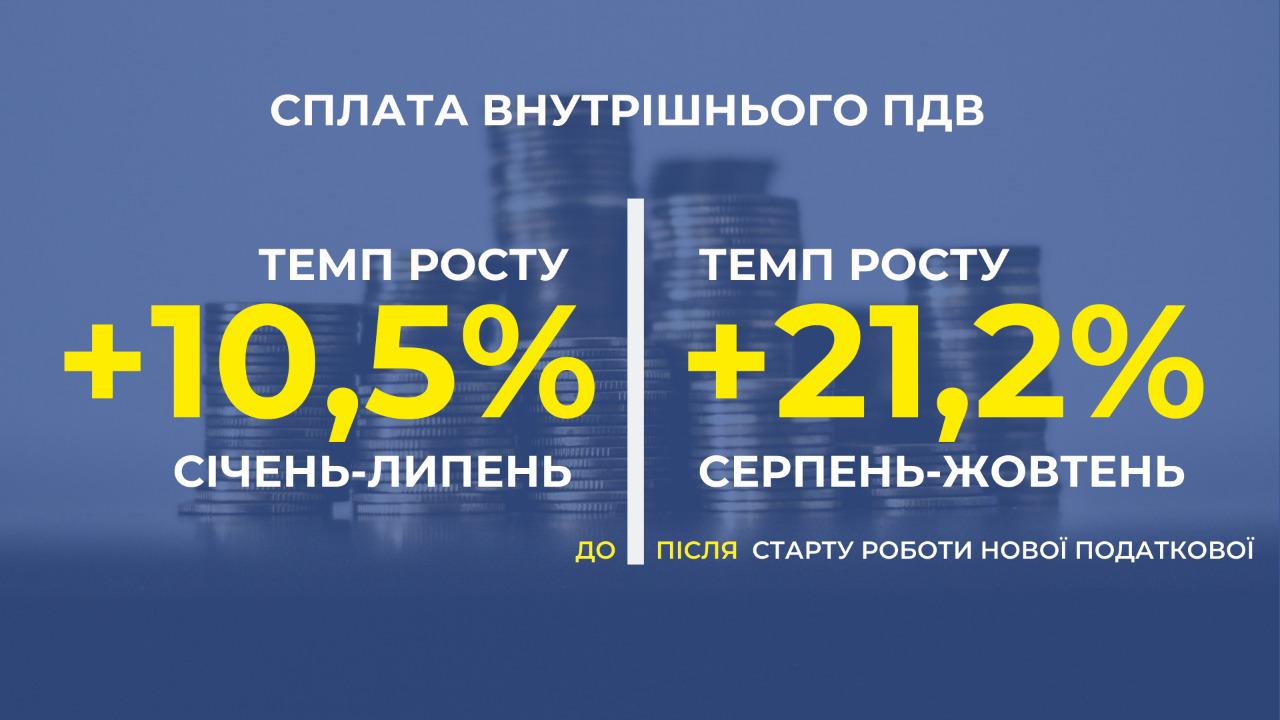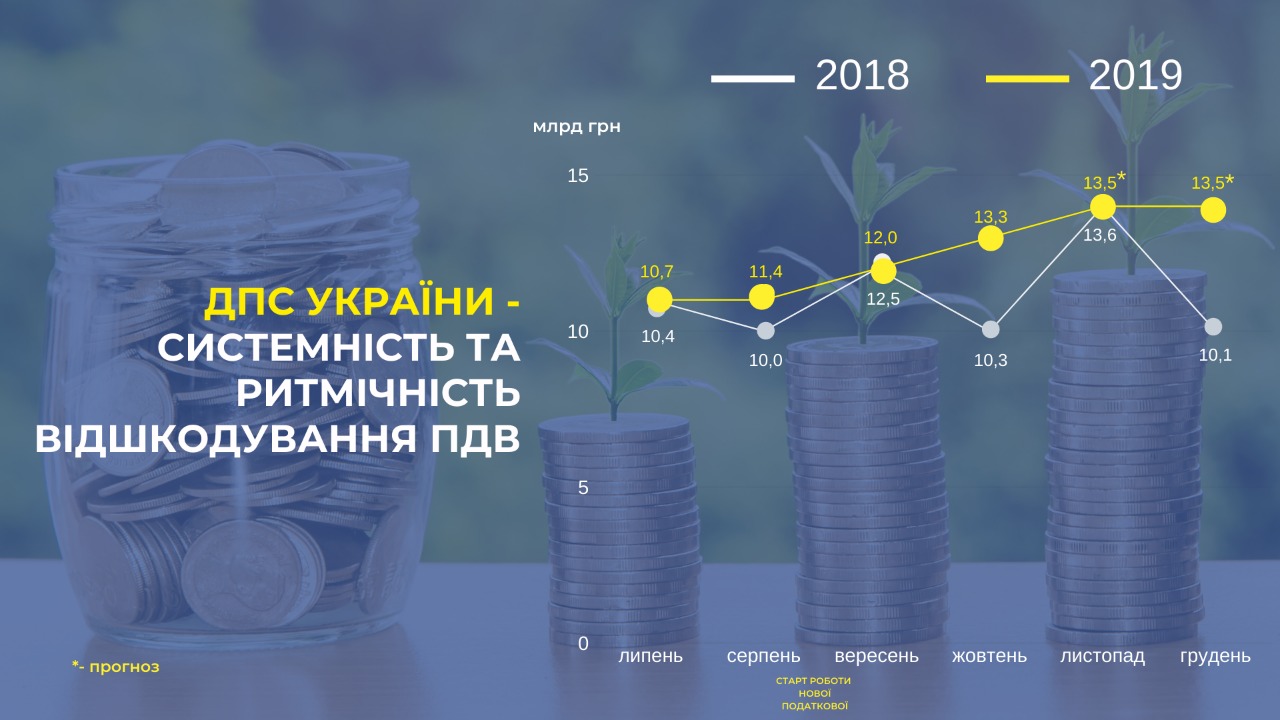In August 2019, the new State tax service was entrusted with the function of administering taxes. In order to evaluate what changes have occurred during this period and whether the work of the new STS is effective, we refer to the figures illustrating the administration process. As an example let’s take the most complex and most sensitive to the effectiveness of tax administration – the VAT. This tax is a major source of revenue to the state budget, as it is a convenient tax lever that allows the state to provide a large portion of the state budget revenues rhythmically at the expense of a broad and stable tax base.
Due to new approaches in the administration and use of analytical tools, in August-October 2019 the VAT growth rates increased by 20.3% and supply (tax bases) increased by only 5.3%. Herewith, the growth rates of domestic VAT payments in August-October are twice the growth rates of payments that were achieved in January-July 2019 (21.2% versus 10.5%).

As a result, the indicative VAT figures (minus compensation) determined for the STS have been fully fulfilled since August. Moreover, the VAT surplus indicator is over fulfilled by 6.5% over August-October 2019.
Another important achievement of the new Tax service is the stabilization of the rhythm and completeness of the VAT refunds according to both taxpayer’s refund applications and the dynamics of export deliveries by our export-oriented business enterprises. Thus, if in August-October 2018 the average monthly amount of applications for compensation was 13.3 billion UAH and the average monthly amount of compensation 10.9 billion UAH, for the same period of 2019 such indicators were 13.5 and 12.3 billion UAH respectively. That is, the new Tax service does not use the VAT refund tool to “artificially” achieve the indicative VAT revenue ratios.

An equally important tool for the VAT administration is the monitoring of the tax invoices and counteraction against the scheme tax credit. Over January-July 2019, in average per month the number about 2 278 taxpayers were added to the Register of risk taxpayers and 0.16% of all registered tax invoices were suspended, then over August-October 2019 such indicators were 1 478 payers and 0.13% respectively. Herewith, as of 01.11.2019, for 335 726 tax invoices for the total amount of 7 717.1 million UAH there was zero submitted notifications for unblocking such amounts – this indicates that invoices of companies involved in minimization schemes are blocked for the first time while the enterprises of the real-sector of economy receive compensation rhythmically and unimpededly.
As follows, the tax invoice monitoring mechanism is, firstly, an effective tool in the counteraction against forged tax credit; secondly, it has significantly improved its productivity and fiscal value over the period of activity of the new Tax service.